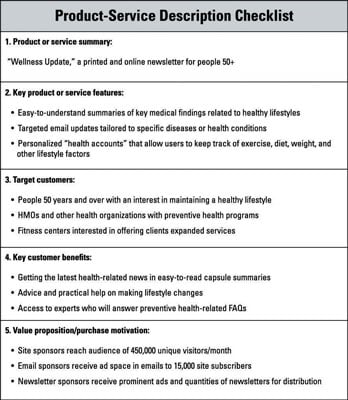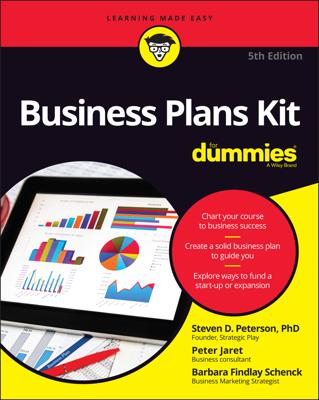Imagine that you’re at your high-school reunion and old classmates ask what you’re up to. As you describe your business — or your business concept if you’re just getting started — you want to cover the high points, and you also want to build enthusiasm by conveying that it’s a really great idea.
Here’s an example of what the conversation may sound like:
“I’ve put together a brand-new way for people to find and join groups. The concept started when I began thinking about how single people use e-dating sites. It occurred to me that a lot of people want to meet people and socialize, but not in a dating situation.
“So I started a site where they can fill out a questionnaire about their location, activity preferences, and daytime availability so that the site can match them to organizations that address their interests.”
“After this site attracts a strong number of followers, I’m planning to extend the idea so that in addition to linking people up with groups, it’ll also link them to places they can buy the gear used in their preferred activity, and I’ll get a percentage of those sales.”
The venture sounds interesting, and the entrepreneur is obviously enthusiastic. But what if those listening start asking questions, such as, “So will the business make enough money to support itself?” “How will people learn about the site?” “How do you choose which groups to send people to?” The answers to these questions determine whether the idea gains support or lands in a pile labeled “It’s a nice idea, but…”
If you’ve watched entrepreneurs pitch their latest, greatest ideas on “Shark Tank,” then you’ve seen a full range of great, good, mediocre, and lousy business descriptions.
As a telling example, here’s a true story: An entrepreneur was presenting her business idea to a group of potential investors. The business idea involved summarizing the latest medical research into easy-to-understand short reports designed to encourage people to lead healthier lifestyles. She talked about the accelerating pace of medical research and new insights by behavioral scientists regarding how people change habits.
She waxed eloquent on the subject of preventive healthcare and showed statistics detailing the aging of the American population. Ten minutes into her presentation, an investor interrupted to ask the simple question, “What is it you’re selling, anyway?” The answer: an online health newsletter directed at people over 50. In her excitement, the entrepreneur forgot to state the obvious.
The moral of this tale? When describing your company, get to the point, beginning with a clear description of your product or service.

Include a concise description of your products or services in the Company Overview and Company Description sections of your written plan. Too much information can confuse the very people you want to convince, so include only as much detail as your audience needs to make sense of and gain enthusiasm for your offerings.
Worth mentioning are features that make your offering meaningfully different, including size, color, design, cost, quality, capabilities, and life span. Most important, though, is to tell how the features deliver valuable customer benefits.
Include a product photo in your business plan if you think it can help readers get a better idea of what you intend to offer. As the saying goes, a picture is worth a thousand words — and generally takes up considerably less space.

